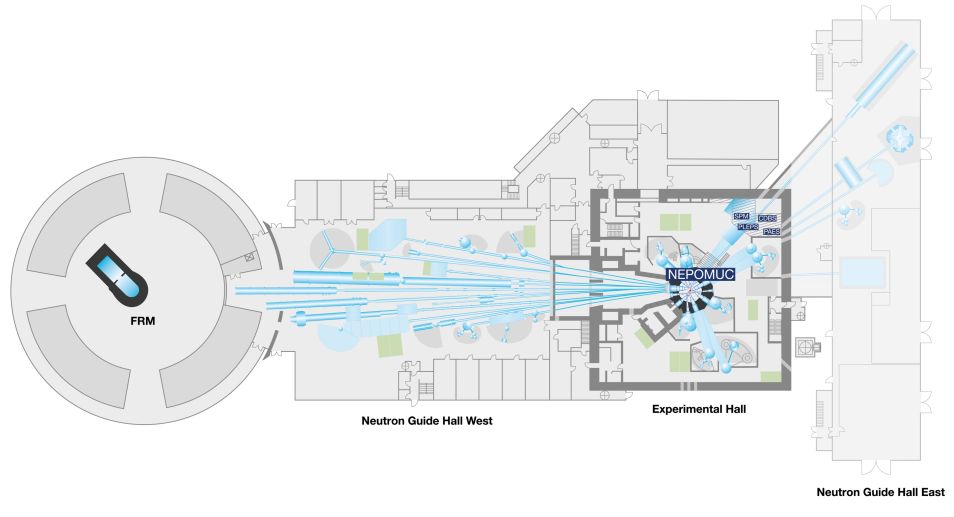MLZ is a cooperation between:
 > Technische Universität München
> Technische Universität München > Helmholtz-Zentrum Hereon
> Helmholtz-Zentrum Hereon
 > Forschungszentrum Jülich
> Forschungszentrum Jülich
MLZ is a member of:
 > LENS
> LENS > ERF-AISBL
> ERF-AISBL
MLZ on social media:

MLZ (eng)
Lichtenbergstr.1
85748 Garching
Positrons
Low mass and adjustable kinetic energy makes the positron a probe perfectly suited to solid state research. As the anti-matter particle of the electron, positrons annihilate electrons with a characteristic lifetime. The emerging annihilation radiation provides detailed information of the local surroundings at the annihilation site. As an example, the positron life time is slightly larger in vacancy-like defects than in the unperturbed crystal lattice. In this way, vacancy concentrations as low as 1:107 can be detected.
The high intensity beam of positrons is generated by pair production from absorbed high-energy gamma-rays. This source is positioned in the cusp of the beam tube SR11, where these gamma-rays are produced by the absorption of neutrons in a cadmium layer. The pair-conversion itself occurs in proximate platinum foils. The positrons are extracted by means of electric and magnetic fields and guided to several experimental stations attached to the positron beam facility of NEPOMUC.
Instrument | Description | Operated by |
|---|---|---|
Neutron induced positron source Munich | TUM, UniBW München | |
Coincident Doppler-broadening spectrometer | TUM | |
Positron annihilation induced Auger-electron spectrometer | TUM | |
Pulsed low energy positron system | UniBW München | |
Scanning positron microscope | TUM, UniBW München |
MLZ is a cooperation between:
 > Technische Universität München
> Technische Universität München > Helmholtz-Zentrum Hereon
> Helmholtz-Zentrum Hereon
 > Forschungszentrum Jülich
> Forschungszentrum Jülich
MLZ is a member of:
 > LENS
> LENS > ERF-AISBL
> ERF-AISBL
MLZ on social media:




